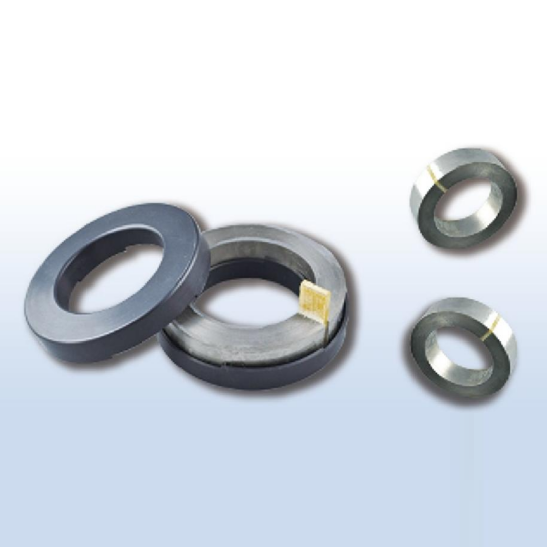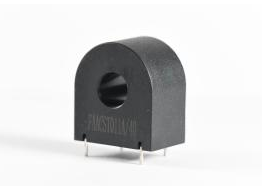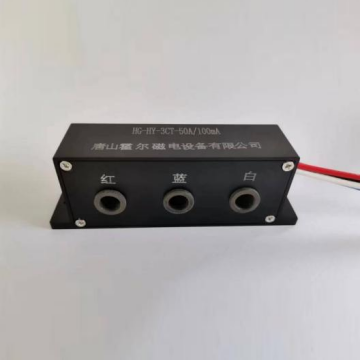Enhancing Inductor Efficiency with Annular Notch Amorphous Inductor Cores

In electrical engineering, improving the efficiency of inductors is key to the optimization of power systems across many applications. Annular notch amorphous inductor cores have become an effective solution that can greatly enhance the efficiency of inductors. This paper will discuss what Annular notch amorphous inductor cores are, their operation principle, their benefits to inductor efficiency enhancement, application scenarios in practice, and how they affect contemporary electrical systems.
Understanding Annular Notch Amorphous Inductor Cores
Definition and Basic Structure
Annular notch amorphous inductor cores are a special type of magnetic core used in inductors. “Annular” refers to its ring, donut-shaped structure, which provides a continuous magnetic path and minimize magnetic flux leakage. “Notch” is a feature in the design, usually a cut or groove on the outer surface of the core. It is a specially designed gap that manages the magnetic field distribution within the core. Amorphous materials are non-crystalline solids with a unique atomic structure. Unlike usual crystalline magnetic materials, the atomic structure of amorphous materials is disordered, resulting in them possessing excellent magnetic properties, such as low coercivity and high permeability.
Characteristics of Amorphous Materials
Amorphous substances employed for annular notch amorphous inductor cores are typically fabricated from alloys, predominantly iron, and also other elements like boron, silicon and carbon. These are blended together in definite proportions to achieve the required magnetic characteristics. The absence of a regular lattice structure in amorphous substances decreases energy loss due to the motion of magnetic domain walls during magnetization and demagnetization. Hence, they have low hysteresis losses. These are one of the key factors for improving the overall efficiency of the inductor. In addition, their high magnetic permeability allows a stronger magnetic field to be established at a smaller magnetic field strength, further improving the performance of the inductor.
How Annular Notch Amorphous Inductor Cores Improve Inductor Efficiency
Optimized Magnetic Field Distribution
The shape of the annular-shaped core provides a more uniform magnetic field distribution compared to other core shapes. The continuous loop of the annulus allows for the ease of magnetic flux lines around the core, and this reduces the creation of stray magnetic fields. The skillfully positioned gaps on the core improve this distribution of the magnetic field. It can control the concentration of magnetic flux in specific areas of the core, thereby allowing for more efficient energy transfer between the windings of the inductor. By optimizing the magnetic field, these cores minimize energy loss due to magnetic flux leakage and improve the coupling between the primary and secondary windings of the inductor, thereby improving its overall efficiency.
Reduced Core Losses
As discussed earlier, amorphous materials have low hysteresis losses. AC, when passed through inductor windings, causes the magnetic core to go through repeated cycles of magnetization and demagnetization. In traditional magnetic cores, the process is one that results in substantial energy losses due to hysteresis. In annular notch amorphous inductor cores, however, amorphous material’s low hysteresis characteristics drastically reduce such losses. Additionally, the notch structure also reduces eddy current losses. By an adjustment of the distribution of the magnetic field, the notch disrupts the formation of large-scale eddy currents in the core and, as a result, decreases energy dissipation in the form of heating. Overall, the combination of low hysteresis and reduced eddy current losses significantly improves the efficiency of the inductor.
Benefits Beyond Efficiency
High Saturation Flux Density
Annular notch amorphous inductor cores typically have a higher saturation flux density. This enables them to withstand greater magnetic fields before saturating. In applications of high-power or high-current inductors, such as motor control circuits and power circuits, this high saturation flux density enables the inductor to efficiently handle the application without saturating prematurely. It enables the inductor to store and transfer more energy, which serves to improve the overall performance and reliability of the electrical system.
Small and Lightweight
Due to the excellent magnetic properties of amorphous materials, Annular notch amorphous inductor cores can have the same inductance value as larger conventional cores within a smaller size. The high magnetic permeability of amorphous materials allows for a more concentrated magnetic field in a smaller volume. Moreover, the best configuration of the annular notch geometry also makes the core more compact. This smaller size and lighter weight make these cores ideal for space-constrained applications such as portable electronic devices, automotive electronics, and aerospace systems.
Practical Application Scenarios
Power Supply System
In power supply systems, inductors play a vital role in filtering, energy storage and voltage regulation. Annular notch amorphous cores for inductors can significantly improve the efficiency of power supplies. For example, in switch-mode power supplies used in most electronic devices, the cores can reduce energy loss during conversion and hence improve overall efficiency. Not only does this save electricity, but also reduces the heat generated by the power supply, hence it is more durable and reliable.
Renewable Energy Systems
Renewable energy systems such as solar inverters and wind turbine converters rely on high efficiency inductors to convert power. Annular notch amorphous inductor cores can improve the performance of inductors applied to these converters. They help maximize the energy harvested from renewable energy sources by improving the efficiency of the power conversion stage. In solar inverters, for example, these cores can have the ability to reduce the losses associated with the inductive component and increase the amount of power that can be fed into the grid.
Electronic Devices
In consumer electronics such as phones, laptops and tablets, space is restricted. Annular notch amorphous inductor cores are best suited for inductors used in such devices because they save space and are efficient. They enable the design of smaller and more energy-efficient power management circuits, which is crucial to extending the battery life of portable electronic devices. Apart from that, their ability to handle high-frequency signals makes them suitable for modern high-speed electronic circuits.
Conclusion
Annular notch amorphous inductor cores have proven to be an excellent choice in maximizing the inductor efficiency. The ring geometry, gap structure, and amorphous structure of the cores together exhibit some advantages, including ideal magnetic field distribution, minimum core loss, maximum saturation flux density, and compactness. Because of these advantages, they are widely used in a wide range of applications, from power systems, renewable energy to consumer electronics. If you are interested, don’t hesitate to get in touch with Hall Magnetics and we will get back to you as soon as possible.





